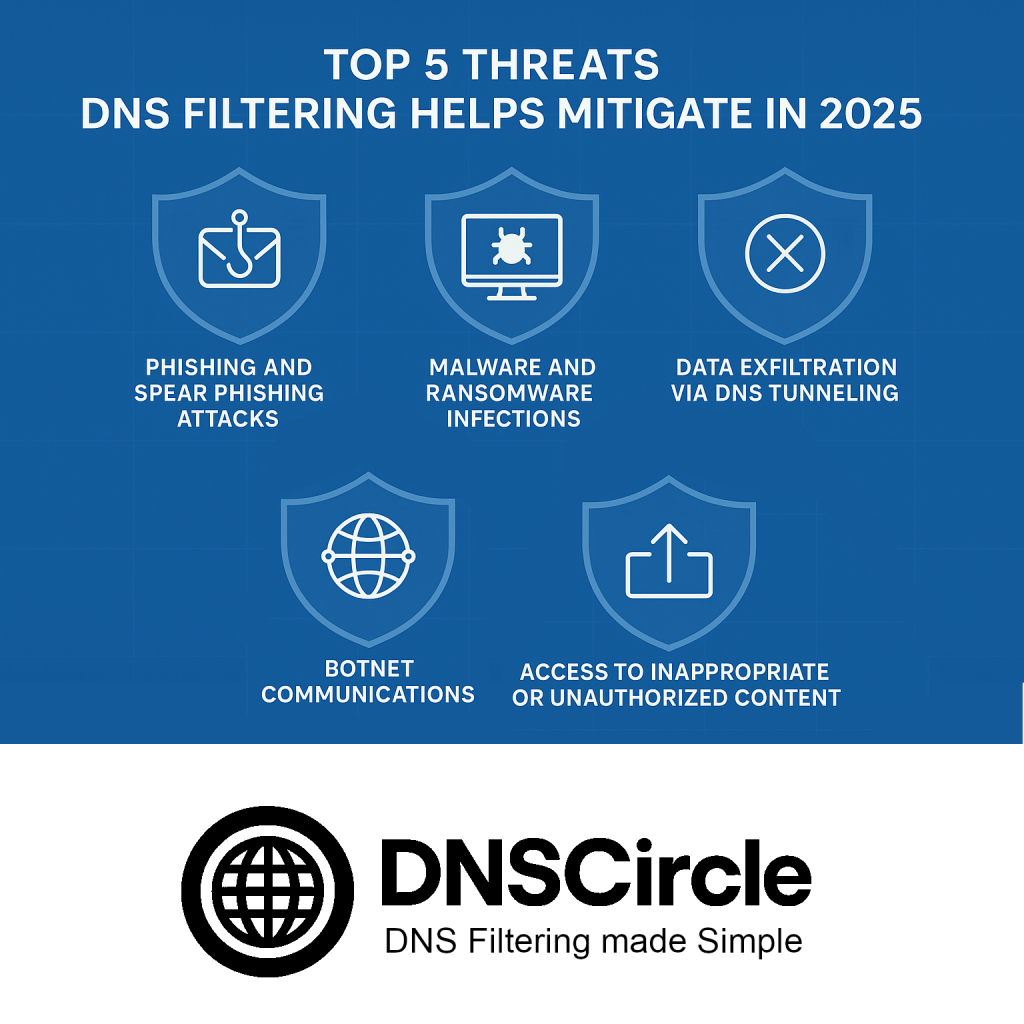In today’s digital landscape, cyber threats are becoming more sophisticated, widespread, and faster-moving than ever before. As organisations adopt cloud-first strategies and support remote workforces, traditional perimeter-based defenses are no longer sufficient. One of the most effective and often overlooked tools in a modern security stack is DNS filtering.
DNS filtering acts as a first line of defense by blocking users from accessing malicious or unauthorised domains before a connection is even established. In 2025, this capability is proving invaluable in combating a growing array of cyber threats.

Here are the top 5 threats DNS filtering helps mitigate in 2025:
1. Phishing and Spear Phishing Attacks
Phishing remains the most common method of cyberattack, but in 2025 it has evolved to be more personalised, believable, and difficult to detect. Sophisticated spear phishing campaigns now use AI to craft convincing emails targeting specific individuals within an organisation.
How DNS Filtering Helps:
When a user clicks on a phishing link, DNS filtering immediately checks the domain against threat intelligence feeds. If the site is known to be malicious or newly registered (a common tactic), access is blocked, stopping credential theft before it happens.
2. Malware and Ransomware Infections
Malware, especially ransomware, has reached alarming levels of automation and scale in 2025. Many attacks now begin with a simple DNS request to download a malicious payload or communicate with a command-and-control (C2) server.
How DNS Filtering Helps:
DNS filtering blocks domains associated with malware distribution or C2 infrastructure, preventing the malware from executing its next steps or exfiltrating data. It also reduces the attack surface by preventing employees from visiting known infected websites.
3. Botnet Communications
Botnets rely on DNS to connect infected devices to their control servers. These connections are often hidden in encrypted traffic or use domain generation algorithms (DGAs) to avoid detection.
How DNS Filtering Helps:
Advanced DNS filtering solutions use AI and pattern recognition to identify and block algorithmically generated or suspicious domain requests. This prevents compromised devices from being remotely controlled or added to a botnet.
4. Data Exfiltration via DNS Tunneling
Attackers are increasingly using DNS as a covert channel for data exfiltration, a technique called DNS tunneling. This allows sensitive information to be smuggled out of a network without detection by traditional security tools.
How DNS Filtering Helps:
DNS filtering platforms can detect anomalies in DNS query patterns, such as unusually long domain names, high query frequency, or unrecognized subdomains. This enables real-time blocking of data exfiltration attempts.
5. Access to Inappropriate or Unauthorized Content
While not strictly a cyber threat, access to non-business or risky websites, such as gambling, adult content, or software piracy sites, can increase security exposure and compliance risks.
How DNS Filtering Helps:
By enforcing content-based access policies, DNS filtering ensures users only access approved domains, reducing the chances of accidental exposure to threats and helping organizations meet regulatory requirements.
Conclusion
As threat actors become more innovative and harder to detect, DNS filtering provides a simple yet powerful method to shut down malicious activity before it starts. It’s a proactive layer of security that complements firewalls, endpoint detection, and threat intelligence systems.
Whether you’re a security leader in a large enterprise or an IT admin in a growing business, integrating DNS filtering into your security strategy in 2025 is no longer optional, it’s essential.
Want to see DNS filtering in action? Reach out to us
